Did you know that some people actually eat raw potatoes? While this may come as a surprise to many, it’s true that there are individuals who choose to consume raw potatoes as a part of their diet. However, this practice is not without its potential risks and considerations.
In this article, we will explore the benefits and risks associated with eating raw potatoes. From the taste and texture differences compared to cooked potatoes, to the health benefits of the resistant starch content, we will provide you with important information to help you make informed decisions about including raw potatoes in your diet.
Key Takeaways:
- Eating raw potatoes is not a common practice, but some people choose to consume them.
- Raw potatoes have a bitter taste and starchy texture that can be off-putting.
- Raw potatoes are high in resistant starch, which provides health benefits.
- Raw potatoes contain more vitamin C than cooked potatoes.
- Raw potatoes may contain antinutrients and toxic compounds that can be harmful.
Raw Potatoes vs Cooked Potatoes: Taste and Texture Differences
When it comes to potatoes, the cooking process can significantly transform their taste and texture. Raw potatoes are known for their bitter taste and starchy texture, which can be less appealing to many palates.
On the other hand, cooking potatoes can unlock a whole new world of flavors and textures. Through the Maillard reaction, a chemical process that occurs when heat is applied to certain foods, cooked potatoes develop a delicious golden-brown crust, enhanced taste, and a softer, creamier texture. This reaction creates compounds that bring out the natural sweetness and depth of flavor in potatoes, making them more palatable and enjoyable to eat.
Comparison of Raw and Cooked Potatoes
| Attribute | Raw Potatoes | Cooked Potatoes |
|---|---|---|
| Taste | Bitter | Sweet and flavorful |
| Texture | Starchy and firm | Soft and creamy |
| Color | White | Golden brown |
As seen in the comparison table above, cooking potatoes greatly improves their taste and texture. The sweet and flavorful experience of cooked potatoes is a stark contrast to the bitter and starchy nature of raw potatoes. Furthermore, the golden brown color that develops during cooking adds visual appeal to dishes, making them even more enticing.
“Cooking transforms raw potatoes into a culinary delight, elevating their taste and texture to new heights.” – Chef Michael Smith
From crispy roasted potatoes to creamy mashed potatoes, the versatile nature of cooked potatoes opens up a myriad of culinary possibilities. Whether you’re enjoying a comforting bowl of mashed potatoes or savoring a crispy bite of roasted potatoes, the cooking process truly enhances the overall eating experience.
However, it’s important to note that everyone’s preference for taste and texture varies. Some individuals may still enjoy the natural taste and texture of raw potatoes in certain contexts. Nonetheless, cooking potatoes remains the most popular method of preparation due to the exceptional flavors and textures it brings out.
Next, we’ll explore the health benefits of consuming raw potatoes, specifically the presence of resistant starch, and how it can positively impact our well-being.
Resistant Starch in Raw Potatoes: Health Benefits
I have some exciting news for you! Did you know that consuming raw potatoes can have numerous health benefits? Raw potatoes are rich in resistant starch, a type of starch that resists digestion in the small intestine. This indigestible starch reaches the large intestine where it serves as food for our beneficial gut bacteria.
Consuming foods high in resistant starch, like raw potatoes, has been linked to a range of health advantages:
- Improved blood sugar control: Resistant starch in raw potatoes has been found to enhance insulin sensitivity and assist in regulating blood sugar levels, which is particularly beneficial for individuals with diabetes or those at risk for developing it.
- Increased feelings of fullness: The ingestion of resistant starch has been associated with increased satiety, helping to curb hunger and potentially promote weight management.
- Enhanced digestive health: The presence of resistant starch in raw potatoes can contribute to overall digestive health by acting as a prebiotic, which supports the growth and activity of beneficial gut bacteria.
So, if you’re looking for a natural way to improve blood sugar control, feel fuller for longer, and support your digestive system, consider incorporating raw potatoes into your diet!
Now, let’s dive deeper into the world of raw potatoes and explore their nutritional content.
Higher Vitamin C Content in Raw Potatoes
When it comes to nutrition, raw potatoes have a distinct advantage over their cooked counterparts: a higher vitamin C content. Vitamin C is an essential water-soluble vitamin that acts as a potent antioxidant in the body. It plays a crucial role in collagen production, immune function, and overall health.
“Raw potatoes are a great source of vitamin C, offering an excellent way to boost your intake of this vital nutrient.”
Vitamin C is known for its immune-boosting properties, helping to protect against common illnesses and supporting the body’s natural defense mechanisms. It also promotes the production of collagen, a protein that contributes to healthy skin, connective tissues, and wound healing.
Consuming raw potatoes allows you to benefit from the higher levels of vitamin C they contain. The boiling or baking process during cooking can cause some of the vitamin C to be lost due to its sensitivity to heat and water-soluble nature. By enjoying raw potatoes, you can maximize your vitamin C intake and take advantage of its numerous health benefits.
If you’re concerned about the bitter taste and starchy texture of raw potatoes, there are several delicious ways to incorporate them into your diet. Try thinly slicing raw potatoes and adding them to salads for an extra crunch, or grate them and use them as a topping for savory dishes. The versatility of raw potatoes makes them a valuable addition to any culinary repertoire.
Comparative Vitamin C Content
| Potato Type | Vitamin C Content (per 100g) |
|---|---|
| Raw Potatoes | 19.7 mg* |
| Cooked Potatoes | 11.4 mg* |
*Source: USDA National Nutrient Database for Standard Reference
As shown in the table above, raw potatoes contain significantly higher levels of vitamin C compared to their cooked counterparts. However, it’s important to note that the vitamin C content of potatoes can vary depending on the variety and freshness. To ensure optimal vitamin C intake, choose fresh and organic raw potatoes whenever possible.
Remember, moderation is key when incorporating raw potatoes into your diet. While they offer nutritional benefits, it’s essential to consider other factors such as food safety, personal taste preferences, and any specific dietary requirements or restrictions. Consulting with a healthcare professional or registered dietitian can provide personalized guidance and ensure a well-rounded and balanced approach to nutrition.
Antinutrients in Raw Potatoes: Impaired Nutrient Absorption
When it comes to the nutritional value of raw potatoes, it’s important to consider the presence of antinutrients that can hinder nutrient absorption in the body. Raw potatoes naturally contain antinutrients such as protein trypsin inhibitor and lectins, which can interfere with the digestion and absorption of essential nutrients.
A specific example is the protein trypsin inhibitor, which inhibits the activity of trypsin, an enzyme necessary for protein digestion. This can affect the body’s ability to break down and absorb proteins effectively. Likewise, lectins found in raw potatoes have been associated with adverse effects on gut health and nutrient absorption.
Cooking potatoes can help mitigate the presence of antinutrients. The heat from cooking can thermally denature proteins and reduce lectin content, making the nutrients more bioavailable and easier for the body to absorb. Thermal processing, such as boiling or baking, can significantly decrease the levels of antinutrients in potatoes, optimizing nutrient absorption.
“Cooking potatoes can help reduce the antinutrient content and optimize nutrient absorption.”
To help illustrate the impact of cooking on antinutrients, here is a comparison table:
| Antinutrient | Raw Potatoes | Cooked Potatoes |
|---|---|---|
| Protein Trypsin Inhibitor | High | Reduced |
| Lectins | High | Reduced |
The table above clearly demonstrates that cooking significantly reduces the levels of antinutrients in potatoes, promoting better nutrient absorption. By choosing to cook your potatoes, you can optimize the nutritional benefits they offer without compromising the body’s ability to absorb essential nutrients.
In the next section, we will explore the presence of toxic compounds in raw potatoes and their potential health risks.
Toxic Compounds in Raw Potatoes: Glycoalkaloids
Raw potatoes can contain toxic glycoalkaloids, namely solanine and chaconine, which can be harmful if consumed in excessive amounts. Glycoalkaloids are natural compounds found in the nightshade family of plants, which includes potatoes, tomatoes, and eggplants.
Glycoalkaloids act as a natural defense mechanism for plants, protecting them from various pests and diseases. However, these compounds can cause negative effects on human health when consumed in large quantities.
The concentration of glycoalkaloids in potatoes can vary depending on factors such as potato variety, growing conditions, and storage methods. Generally, higher levels of glycoalkaloids are found in the skin and sprouts of potatoes.
Potential Health Risks of Glycoalkaloids
Consuming high levels of glycoalkaloids can lead to adverse effects on the body. The symptoms of glycoalkaloid poisoning may include gastrointestinal discomfort, nausea, vomiting, headache, diarrhea, and in severe cases, neurological symptoms such as confusion and paralysis.
It’s important to note that the threshold for glycoalkaloid toxicity varies among individuals, and some people may be more sensitive to these compounds than others. Additionally, children, elderly individuals, and those with certain health conditions may be at a higher risk of experiencing adverse effects from glycoalkaloids.
Reducing Glycoalkaloid Content in Potatoes
To minimize the ingestion of glycoalkaloids, it is recommended to follow these safety measures:
- Choose fresh and firm potatoes without any green discoloration or sprouts. Green potatoes tend to have higher glycoalkaloid content.
- Store potatoes in a cool, dark place to prevent the development of green patches and sprouts.
- Peel potatoes before cooking to reduce the glycoalkaloid concentration, as most of these compounds accumulate in the skin.
- If you prefer to consume potatoes with the skin, ensure they are washed thoroughly to remove any dirt or residues, which may contain glycoalkaloids.
- Cook potatoes using methods such as boiling, baking, or microwaving, as these processes can help reduce the glycoalkaloid content.
Despite the potential risks associated with glycoalkaloids, it’s important to note that cooked potatoes generally have significantly lower levels of these toxic compounds. Proper handling, storage, and cooking methods can help ensure the safe consumption of potatoes while minimizing the risk of glycoalkaloid poisoning.
Next, we’ll explore the potential digestive issues that can arise from consuming raw potatoes.
Digestive Issues from Raw Potatoes
Consuming high amounts of resistant starch from raw potatoes can lead to digestive issues. These include:
- Gas: Raw potatoes can cause excessive gas production in the digestive system due to the breakdown of resistant starch by gut bacteria.
- Bloating: The fermentation of resistant starch in the gut can result in bloating, discomfort, and a feeling of fullness.
- Stomach Discomfort: Some individuals may experience stomach discomfort or cramps after consuming raw potatoes, especially in large quantities.
Additionally, raw potatoes may harbor contaminants, bacteria, and traces of soil, increasing the risk of foodborne illness. Thoroughly washing potatoes before consumption is crucial to remove potential pathogens.
To mitigate digestive issues associated with raw potatoes, it is recommended to:
- Gradually increase intake: Start with small portions of raw potatoes and gradually increase the amount over time to allow the digestive system to adjust.
- Thoroughly wash potatoes: Properly clean raw potatoes by scrubbing them under running water to remove any dirt or bacteria.
It’s important to note that individual tolerance to raw potatoes may vary. If you experience persistent digestive discomfort or other adverse symptoms after consuming raw potatoes, it is advisable to consult a healthcare professional.
| Common Digestive Issues from Raw Potatoes | Preventive Measures |
|---|---|
| Gas | Start with small portions and gradually increase intake. Thoroughly wash potatoes before consumption. |
| Bloating | Avoid consuming excessive amounts. Properly clean raw potatoes to remove potential pathogens. |
| Stomach Discomfort | Monitor your tolerance to raw potatoes and adjust intake accordingly. Always wash potatoes thoroughly. |
How to Safely Consume Raw Potatoes: Peeling and Preparation
When it comes to eating raw potatoes, it’s important to follow proper safety precautions to minimize any potential risks. Here are some steps to safely consume raw potatoes:
1. Peel the Potatoes
Peeling raw potatoes is recommended to reduce the consumption of glycoalkaloids, which are toxic compounds that can be present in the skin. By peeling the potatoes, you can significantly reduce the risk of ingesting harmful substances.
2. Thoroughly Wash the Potatoes
Before consuming raw potatoes, it is crucial to thoroughly wash them under running water. This helps remove any dirt or potential pathogens that might be present on the surface of the potatoes.
3. Handle with Clean Hands and Utensils
When preparing raw potatoes, ensure that your hands and utensils are clean to prevent cross-contamination. Wash your hands with soap and warm water before and after handling raw potatoes, and use clean knives or peelers to avoid introducing any additional bacteria or contaminants.
4. Store Potatoes Properly
To maintain the freshness and quality of raw potatoes, store them in a cool, dark, and dry place. Avoid storing them near onions or other fruits and vegetables that release ethylene gas, as this can cause the potatoes to sprout or spoil faster.
5. Practice Overall Food Safety
Raw potatoes should be treated like any other raw produce. Incorporating a variety of fruits and vegetables in your diet is essential for overall health and well-being. Wash all fruits and vegetables thoroughly, including potatoes, to remove any potential contaminants or bacteria.
“Peeling raw potatoes is an important step in safely consuming them. By removing the skin, you can minimize the intake of toxic glycoalkaloids and reduce the risk of potential health issues.” – Food Safety Expert
| Step | Description |
|---|---|
| Peel the Potatoes | Remove the skin to reduce the consumption of glycoalkaloids. |
| Thoroughly Wash the Potatoes | Rinse the potatoes under running water to remove dirt and potential pathogens. |
| Handle with Clean Hands and Utensils | Ensure hands and utensils are clean to prevent contamination. |
| Store Potatoes Properly | Keep potatoes in a cool, dark, and dry place to maintain freshness. |
| Practice Overall Food Safety | Wash all fruits and vegetables thoroughly to remove contaminants. |
Raw Potato Recipes and Uses
While raw potatoes are not commonly consumed, there are some creative recipes and innovative uses for raw potatoes that can add a unique twist to your culinary adventures. Here are a few ideas to inspire you:
1. Grated Raw Potato Salad
Create a refreshing and crunchy salad by grating raw potatoes and combining them with your favorite vegetables. Add a zesty dressing for extra flavor. This salad is a great way to incorporate raw potatoes into your meal while enjoying a delightful combination of textures.
2. Thinly Sliced Raw Potato Dishes
Embrace the natural flavors of raw potatoes by thinly slicing them and using them in dishes like potato tartare. Layer the slices with herbs, spices, and other ingredients to create a visually stunning and scrumptious appetizer or side dish.
“Raw potatoes offer a unique taste and texture that can add an interesting element to various dishes.”
Get creative in the kitchen and experiment with these raw potato recipes to discover new flavors and textures. However, it is important to note the potential risks associated with consuming raw potatoes, such as the presence of antinutrients and toxic compounds.
| Recipe | Description |
|---|---|
| Grated Raw Potato Salad | Refreshing and crunchy salad with a zesty dressing |
| Thinly Sliced Raw Potato Dishes | Visually stunning appetizers with layers of flavor |
Cooking vs Raw Potatoes: Which is Better?
When it comes to enjoying potatoes, both raw and cooked options have their merits. Let’s delve into the differences and benefits of each.
Raw Potatoes: Nutritional Highlights
Raw potatoes have specific nutritional qualities that make them worth considering. They contain higher amounts of vitamin C compared to cooked potatoes. Vitamin C is an essential antioxidant that supports immune function and collagen production.
Additionally, raw potatoes are rich in resistant starch, an indigestible carbohydrate that acts as a prebiotic, supporting the growth of beneficial gut bacteria. Resistant starch has been linked to improved blood sugar control, enhanced digestive health, and increased feelings of fullness.
Cooked Potatoes: Flavor and Texture Enhancements
While raw potatoes have nutritional advantages, many people prefer cooked potatoes due to their improved taste and texture. Cooking potatoes triggers the Maillard reaction, leading to the development of complex flavors and desirable textures.
Cooking methods like boiling, baking, or roasting can enhance the palatability of potatoes, making them more enjoyable to eat. Furthermore, cooking potatoes can help break down antinutrients and potentially harmful compounds, increasing nutrient availability and reducing the risk of digestive issues.
| Raw Potatoes | Cooked Potatoes |
|---|---|
| Higher vitamin C content | Improved taste and texture |
| Rich in resistant starch | Reduced antinutrient content |
| Potential digestive issues | Enhanced nutrient absorption |
“Both raw and cooked potatoes have their benefits. Raw potatoes provide higher vitamin C and resistant starch, while cooking brings out delicious flavors and improves nutrient absorption.” – Me
When deciding between raw and cooked potatoes, it is important to consider personal preferences and health requirements. Cooking potatoes can enhance taste and texture while reducing certain risks associated with consuming raw potatoes, such as potential digestive issues and antinutrient content.
However, if you enjoy the taste and crunch of raw potatoes, incorporating them into your diet in moderation can provide unique nutritional benefits. Just remember to wash them thoroughly and peel them to minimize potential risks from glycoalkaloids and contaminants.
Conclusion
Eating raw potatoes can be an interesting choice for those looking to explore different culinary options, but it’s important to weigh the potential benefits and risks.
On the positive side, raw potatoes are rich in vitamin C, which supports immune function and collagen production. They also contain resistant starch, which can provide energy for beneficial gut bacteria and may have positive effects on blood sugar control and digestion.
However, it’s crucial to remember that raw potatoes also come with potential drawbacks. They contain antinutrients and toxic compounds like glycoalkaloids, which can hinder nutrient absorption and, in large quantities, be harmful to health. Digestive issues such as gas and bloating can also arise from consuming high amounts of resistant starch.
To safely incorporate raw potatoes into your diet, it’s advisable to peel them to minimize the ingestion of glycoalkaloids and contaminants. Thoroughly washing the potatoes is also vital for removing potential pathogens. Considering personal preferences, health conditions, and proper preparation methods will help you make an informed decision about including raw potatoes in your meals.
As with any dietary choice, moderation and variety are key. Balancing your intake of raw and cooked potatoes, while also including a diverse range of fruits, vegetables, and other nutritious foods, will ensure a well-rounded and nourishing diet.

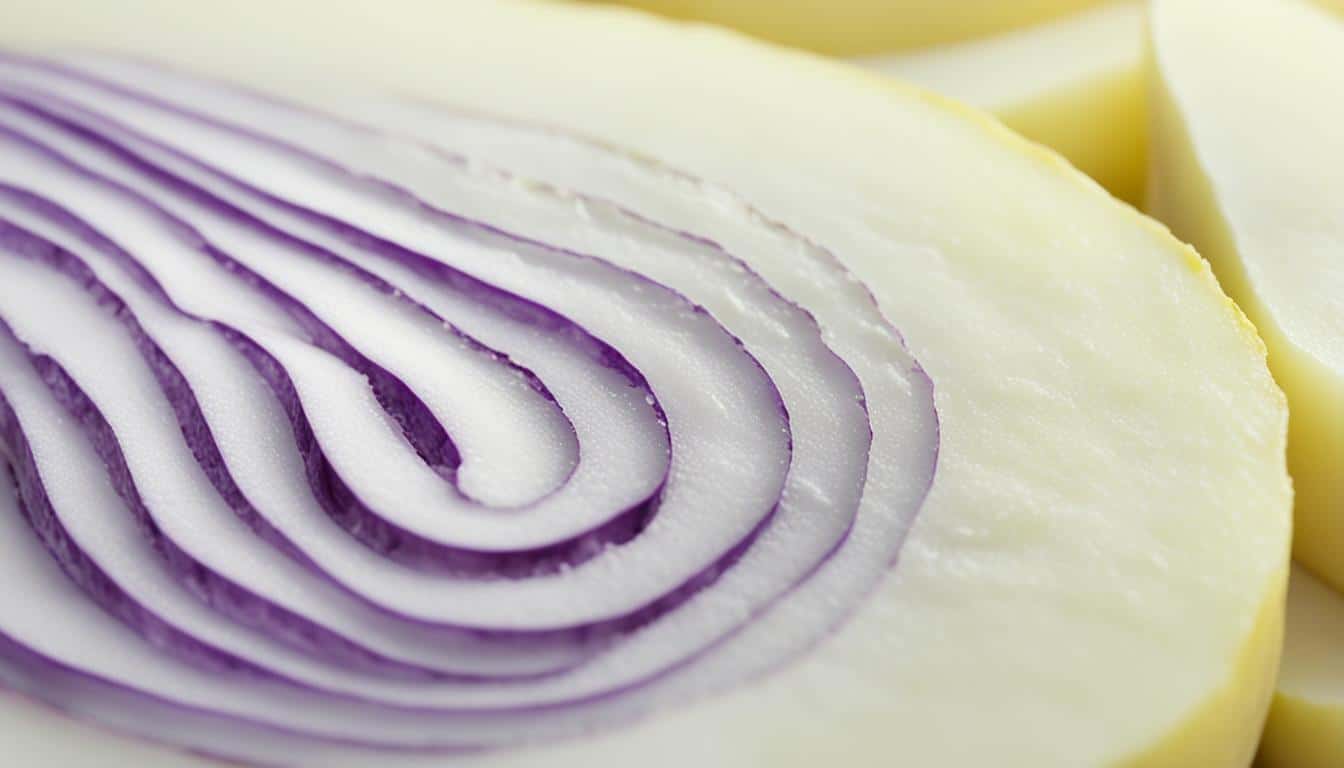
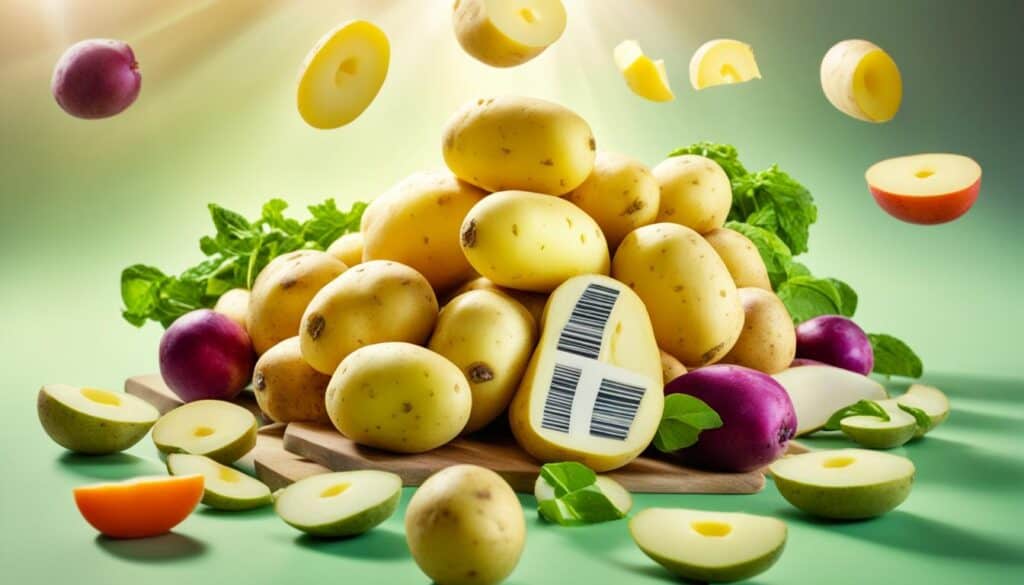
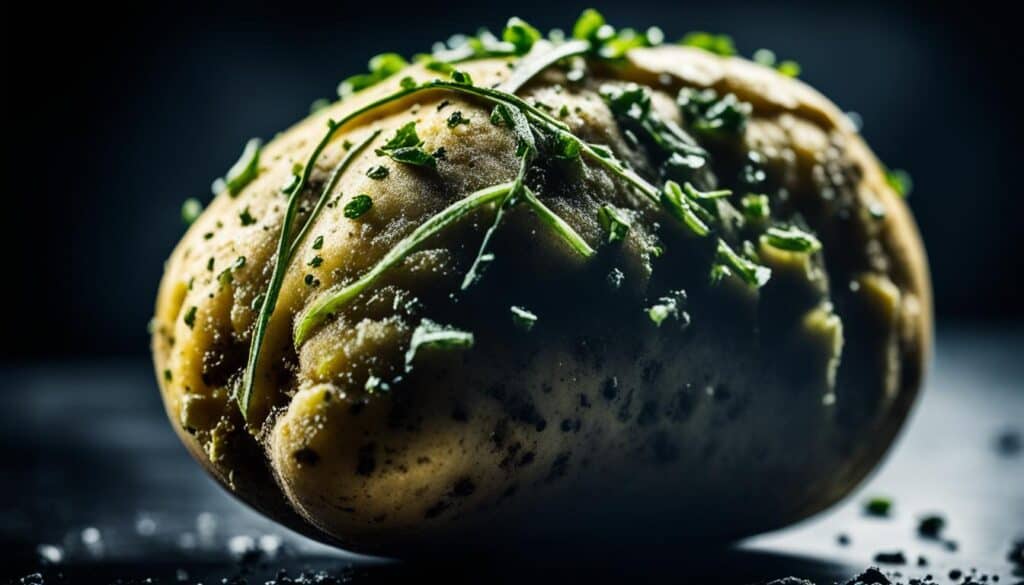
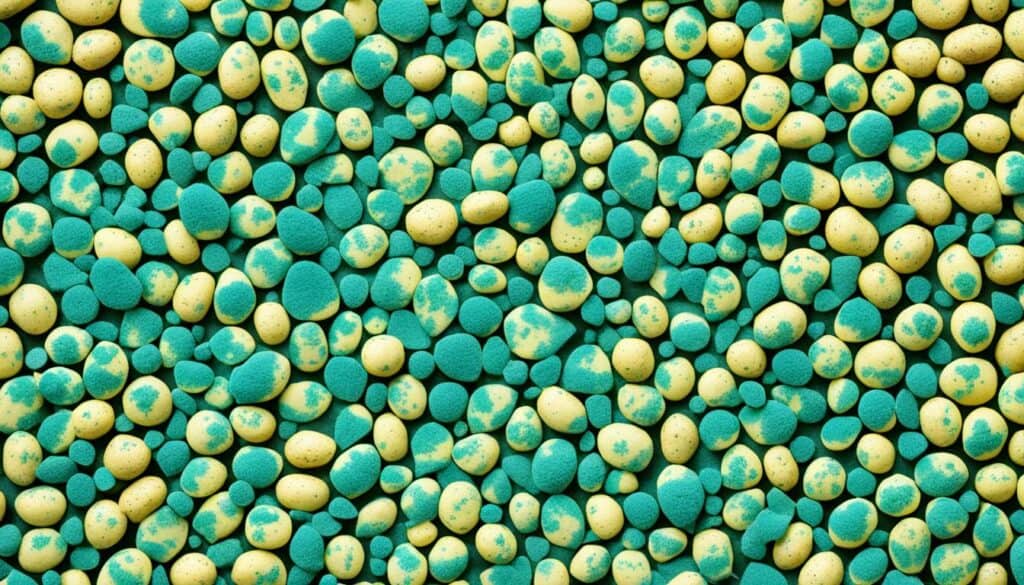
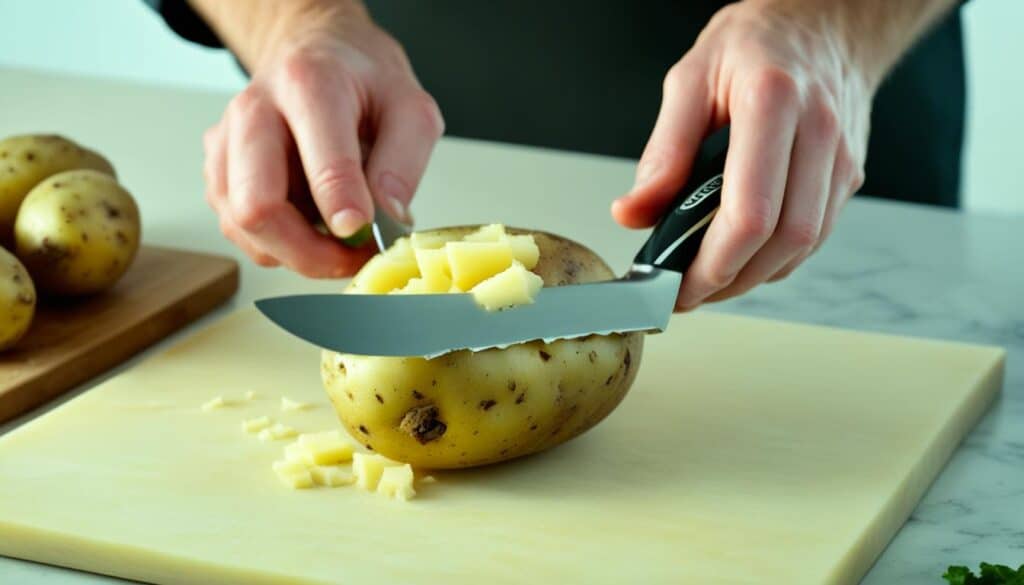
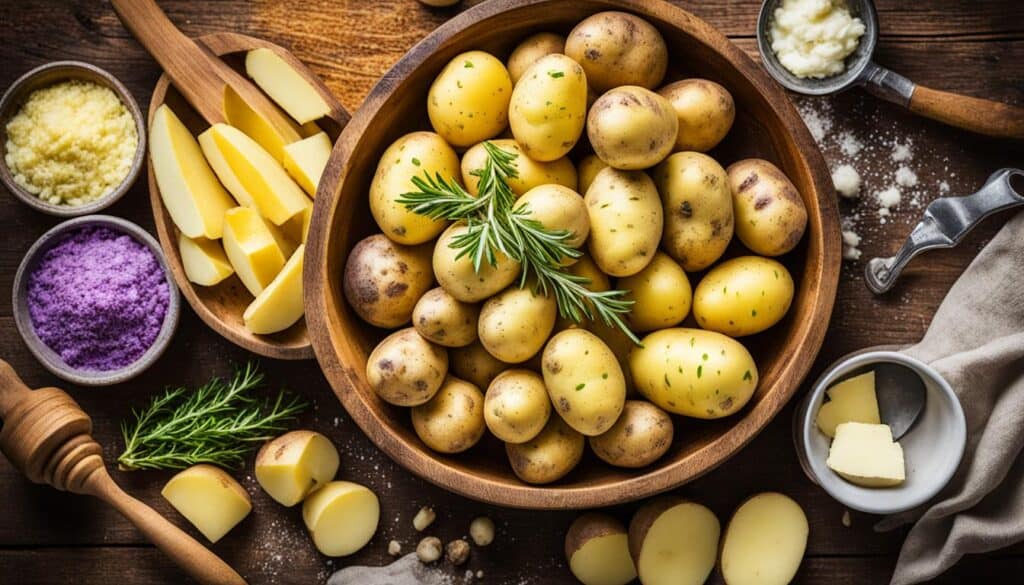



Leave a Reply